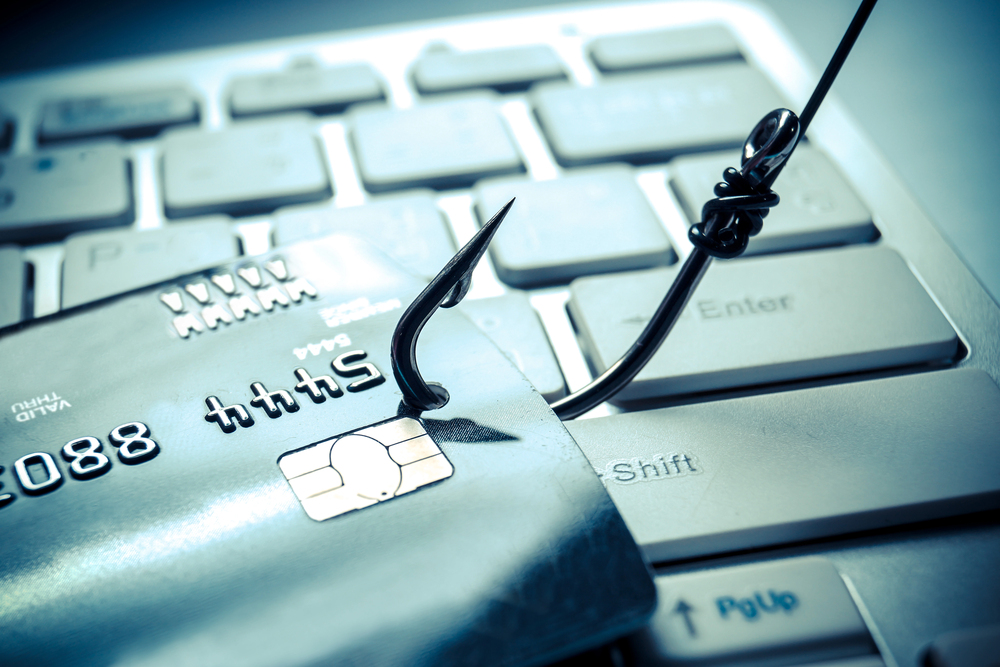
Expert Tips for Effective Chargeback Dispute Management
Feb 16, 2022 3 minute Read
Last week, we took a seat with David Pirtle, VP-Enterprise Engagement, from Chargebacks911 to uncover the chargeback dispute process on both ends. With his advice, you can better manage your chargebacks, understand which real-time alert notifications best fit your workflow, and learn about the chargeback process.
With all this information in your grasp, you can lower your chargeback ratio and improve not only your business’ reputation, but that of your entire industry. Curious? Keep reading to find out everything you need for the best chargeback management solutions, no matter your industry or business size.
Follow along below, listen to the podcast, or watch our discussion here.
Why do chargebacks happen?
Chargebacks can be categorized into three main groups.
Criminal Intent: This includes things like a stolen identity, theft of credit card details, and 1st-party fraud. Summed up, it’s the category for people who know they’re doing something illegal/criminal and want to do it.
Merchant Error: This one makes up around 40% of chargebacks. It happens when a merchant has too strict of a return/refund policy or descriptors that don’t make sense to cardholders.
Friendly Fraud: This one is the largest source of chargebacks and happens when a customer makes a legitimate purchase but for whatever reason requested a refund directly from their bank or credit card.
The reason why you receive a chargeback can fit into one of these three main categories. But for more insight onto the specific reason per chargeback, you can find it’s reason code.
Are 0% chargebacks possible?
A lot of merchants come to us with a vision and goal of having zero chargebacks. David was the perfect person to come to about this, so we asked him, “are 0% chargebacks possible?”
No. Simply put, they are not. You will always receive chargebacks as a merchant, there’s nothing you can do to stop 100% of the people coming back at you with a chargeback. Friendly fraud is unavoidable because it’s completely within the customer’s power to request a refund from their bank.
But that doesn’t mean you can’t keep your chargeback rate low. You can do something about both criminal intent and merchant error chargebacks.
Update Your Descriptor
First thing you can do is update your descriptor. A lot of default descriptors have your business’ state included. Remove that. Customers easily get confused when they see something on their bank statement that doesn’t align with their memory and the first reaction is to dispute it. If they live in Florida and see a charge based out of California, they’re going to dispute it. Everyone does. That gives sign of fraud. But if your e-commerce business operates out of California, then your descriptor will likely include that information and that’s only going to harm you.
Instead of the state, you should include your customer service phone number and, if there’s room, your website. You need the number there because you want to make it as easy as possible for customers to get in touch with you if they have a problem with their order. These days, banking apps have a button right there on the charge for disputing it. You need to make it just as easy for customers to request a refund instead, so it doesn’t lead to a chargeback.
Revamp Your Refund Policy
If you receive a lot of chargebacks, then your refund policy probably sucks. It’s a dilemma that most merchants have, either leading them to eventually comes to terms with or shut down their business.
Your refund policy needs to be accommodating to customers. You aren’t giving in, you’re preventing a chargeback. Think about it this way: if you have a stringent refund or return policy and a customer’s order doesn’t adhere to those terms, then they’ll ask their bank for a refund. When that happens, you get a chargeback, pay for that chargeback, fees, and the transaction amount without receiving that product back.
If you have a quality, accommodating return policy, customers will be more willing to come to you for a refund instead.
In both scenarios, you end up paying for the refund, but one costs far more than the other.
Get Someone to Test Your Sales Funnel
Don’t test it yourself. You know how your funnel works (where to click, what to do, etc.). You need to get your second cousin twice removed to test it for you so you can get a set a fresh eyes and hands on the process.
This person needs to do it all from scratch. Search the site, find a product they want, add it to the cart, buy it, have it delivered, and then make a return while chatting with customer service. This is the only way you can 100% know what a customer experiences on your site.
Limit Transaction in Your Gateway
One really simple trick for those of you who have a merchant account and access to your gateway is to limit the number of transactions a single credit card can make. A lot of actual fraud (not friendly fraud) happens this way—with someone making a million purchases by using the same card.
On your payment gateway, you can choose to limit per card or per bin number. It’s a quick and easy way to add fraud prevention directly to your site.
Clean Up Your Online Reputation
Your reputation affects more than just customers’ opinion and your revenue, it also affects how issuers see how risky your business is.
Go on the compliant boards, BBB, review sites and take care of all the complaints and compliments made about your business. You need to have a team that’s on top of it to alleviate customer worry about your business being a scam and build up a positive reputation for when you communicate with issuers about your chargebacks.
Should you turn on all chargeback alerts?
Yes, for a time. There are really two types of chargeback alerts: high risk and low risk. If you’re a high-risk business, then you should absolutely turn on all alert automations and. But the alerts that you keep on after a certain about of time depends on your individual business.
Traditional Alerts
These alerts are the kind that involves a direct relationship with the issuer. It tells the customer that you, as a merchant, can offer a refund in case they plan on filing a chargeback. It’s a great way to minimize chargebacks by essentially swapping out the process a customer goes through right there with their bank.
In order to take part in these, you need to part of a program like RDR from Visa.
This type of alert is helpful for all businesses, but moreso for those in a high-risk sector who are breaching thresholds.
Consumer Clarity and Order Insights
This is an instant transaction of information provided back to the issuer so they can make a better decision about the customer dispute. This type of alert doesn’t require a refund, they retain the transaction amount, and they prevent you from receiving a penalty fee.
Verifi from Visa and Ethoca from MasterCard offer this service, however other providers can streamline the process by minimizing the overlap that these two card networks have so you receive more clarity on the alerts you receive.
Turn On Alerts for 60 Days
The sweet spot for keeping on all alerts is 60 days because these two months will give you a good average of what to expect from each program.
The reason it’s 60 days is because some chargeback notification alerts take longer to set up while others are instant. So if one alert takes an entire month to get up and running, then you need at least a month of proper use before you can gauge how well it works for you.
A lot of merchants complain about the cost, but here’s food for thought: it’s more expensive to lose your merchant account than it is to turn on all chargeback alert services for two months.
Should you respond to all chargebacks?
Yes! The process of responding to a chargeback is called representment.
A lot of the chargebacks that you receive are probably fraudster related, which is something you need to be on top of. In doing so, you maintain a more positive relationship with the issuing bank.
Chargebacks are incredibly expensive, so you should never just let them settle. The cost actually increases when you dispute them, which is a risk for the issuer. If the initial chargeback costs just $6, then the issuer will have no problem sending them your way if you never respond. But as soon as you dispute it, the price leaps up to $45. And if you reverse it, it goes up even more.
It won’t benefit the issuer if you respond to every chargeback because it becomes more expensive and time consuming for them. Also keep in mind that there’s a person reviewing your representment. They don’t want to spend forever and a day reading your disputes. Eventually, they’ll start pushing back onto the customer when it comes to friendly fraud activity.
Representment Improves Your Business and Industry Reputation
Issuers keep records of chargebacks for both your MCC and your individual merchant account. By disputing your chargebacks, you’re not only helping your one merchant account gain a better rep with that issuer, but the entire MCC (meaning every business within your industry).
Here’s a tip: be annoying. Dispute your chargebacks. Annoy the issuer. Eventually, they’ll tone it down on their end and start taking care of some of these potential chargebacks for you by telling the customer to request a refund.
Keep Your Representment Info Concise
Issuers don’t have hours to spend reading your dispute. They want something short and sweet that gets to the point. You should have no more than just a few pages, if that. The goal is to be as transparent as possible.
When your info is too long, it doesn’t make the issuer want to investigate it. It’s too time consuming, and that can harm your reputation and the outcome.
Tips on What to Include in the Representment
Card Brand: Each network has their own rules that govern the process of disputes.
Reason Code: The reason code dictates what compelling evidence you should include.
Type of Transaction: Digital disputes are completely different that tangible ones.
Issuer: Each issuer’s teams will look for certain chargeback data.
Wrapping Up: Take Control with Better Chargeback Dispute Management
Don’t make the mistake of viewing chargeback management as a cost. There are a lot of benefits that come from managing your chargebacks properly, and you can outsource it to make it easier.





4 thoughts on “Expert Tips for Effective Chargeback Dispute Management”